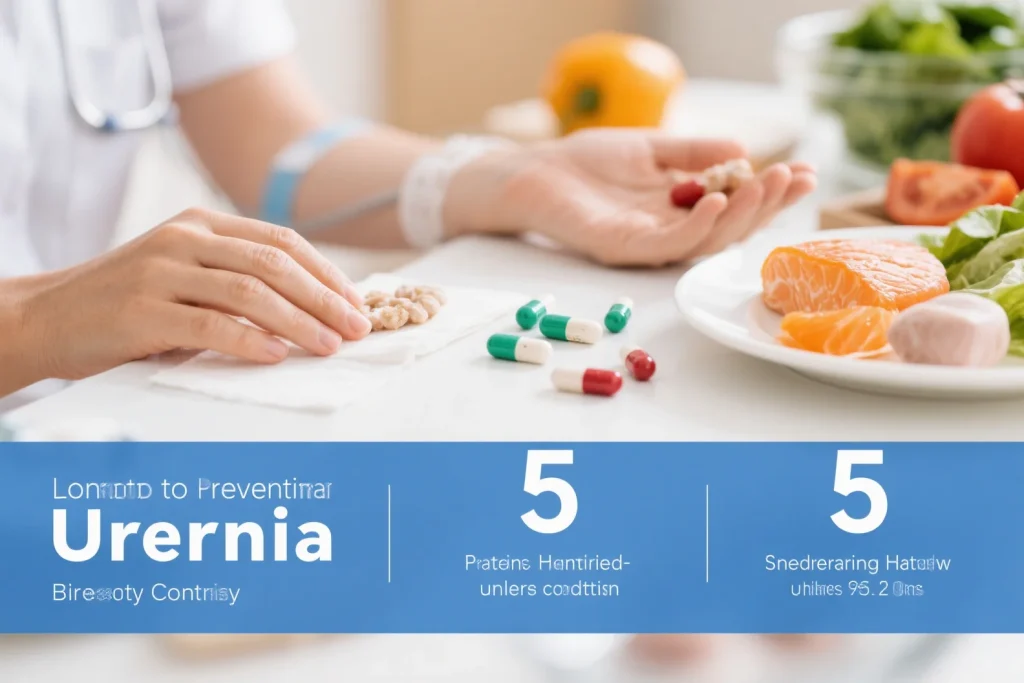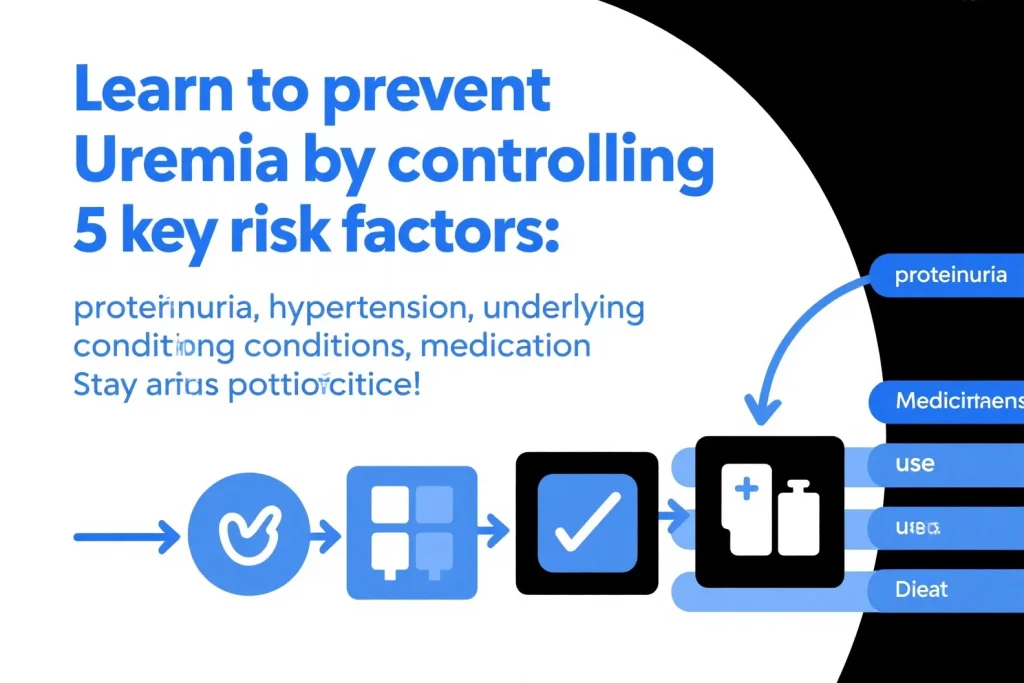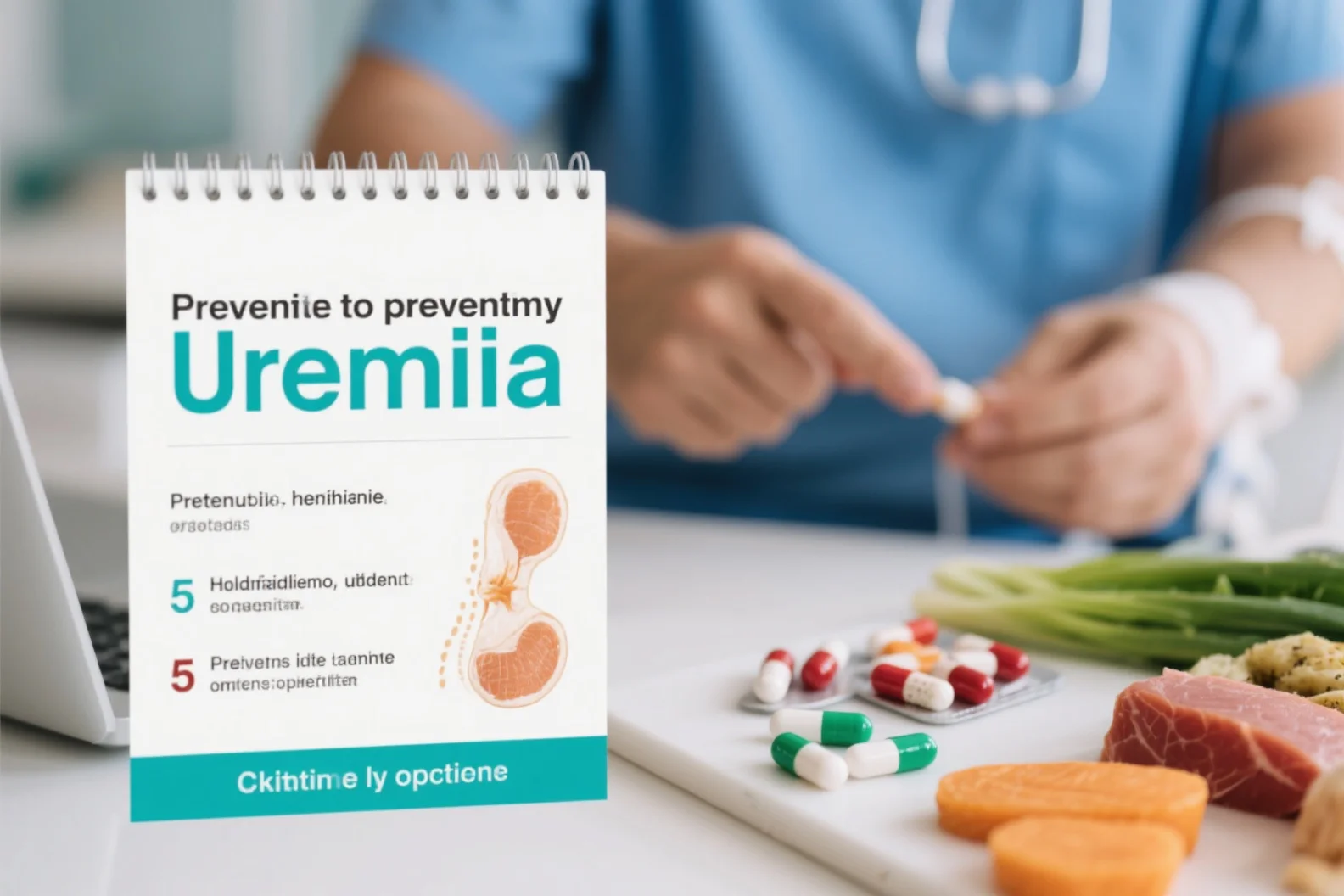What do kidney disease patients fear most? First, the cost of treatment; second, uremia.
Medical expenses worry anyone with modest means, so cost isn’t unique to kidney patients. That leaves uremia as the primary concern.
Uremia, often called the “undying cancer,” is a stage where medications are ineffective. The two main options are dialysis or a kidney transplant. Dialysis is relatively affordable but time-consuming, requiring 3–4 hours per session, 2–3 times a week, severely limiting freedom. A transplant may yield better results, but kidney sources are scarce, and surgery is costly, often unaffordable for average families. Since neither option is ideal, kidney patients dread progressing to uremia, making “how to prevent it” a common question.
Preventing uremia hinges on controlling these five key risk factors:

1. Proteinuria
Proteinuria is an independent risk factor for kidney damage. Persistent protein leakage can gradually lead to uremia. Many patients ask, “How do I eliminate proteinuria?” Standard treatment often starts with steroids. Some patients see their proteinuria resolve quickly with steroids, easing their worries. However, others relapse when steroids are reduced or find steroids ineffective. For the latter, explore alternatives promptly—steroids may no longer work. Consider blood pressure medications like ACE inhibitors or ARBs combined with Chinese herbal remedies to reduce proteinuria. Alternatively, seek treatment at reputable tertiary or specialized kidney hospitals using traditional Chinese medicine to stabilize urinary protein below 0.5g.
2. Hypertension
The kidneys are a primary target of high blood pressure. Elevated blood pressure may not show immediate effects, but within five years, the damage becomes evident compared to peers with stable blood pressure. Keep blood pressure steady through prescribed medications and lifestyle adjustments.
3. Treat the Underlying Condition
Many kidney diseases stem from other conditions, such as diabetic nephropathy or lupus nephritis. For example, in diabetic kidney disease, controlling blood sugar is critical. Sustained high blood sugar causes immeasurable kidney damage and other complications like diabetic foot, which is painful. Prioritize blood sugar control to manage diabetes effectively.
4. Exercise Caution with Medications
Avoid nonsteroidal anti-inflammatory drugs (e.g., ibuprofen) and medications containing aristolochic acid (e.g., Longdan Xiegan pills). Always check drug ingredients to avoid mistakes.
5. Master Your Diet
While dietary restrictions matter for kidney disease, balanced nutrition is even more crucial. Many patients avoid all foods out of fear, which is unwise. A balanced diet with controlled restrictions best supports disease management. Keep meals light, reduce salt, oil, sugar, and fat intake, and follow a high-quality, low-protein diet. Moderate amounts of meat (beef, lamb, fish, poultry), milk, and eggs are not harmful to kidney patients.
Kidney disease is most treatable before stage three. After stage three, creatinine levels rise, indicating kidney function decline. At this point, treatment focuses on preserving remaining kidney function and delaying kidney failure.

What steps will you take to protect your kidneys?
Share this content:

Leave a Reply